Tag: Ajanta Cave 1
-
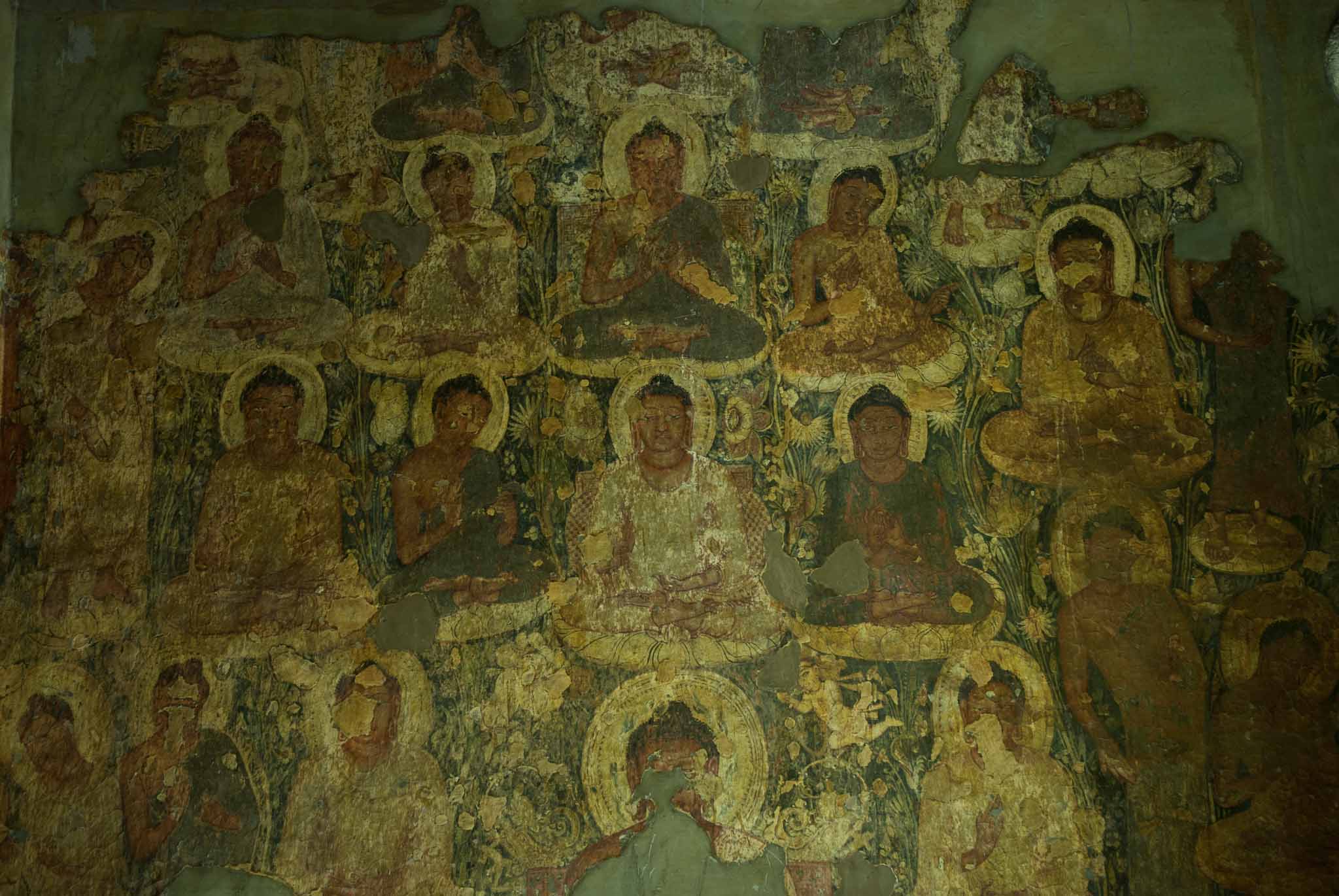
#88. Mahāprātihārya
Cave No. 1 Identification: Foucher (1921, narrative no. 57). The legend is from the life of the Buddha.—There were six ascetics, who misled the followers of the Buddha when he preached about the path to salvation. They wanted to challenge the Buddha’s spiritual power in a contest. They sought King Bimbisāra’s endorsement, which was not…
-
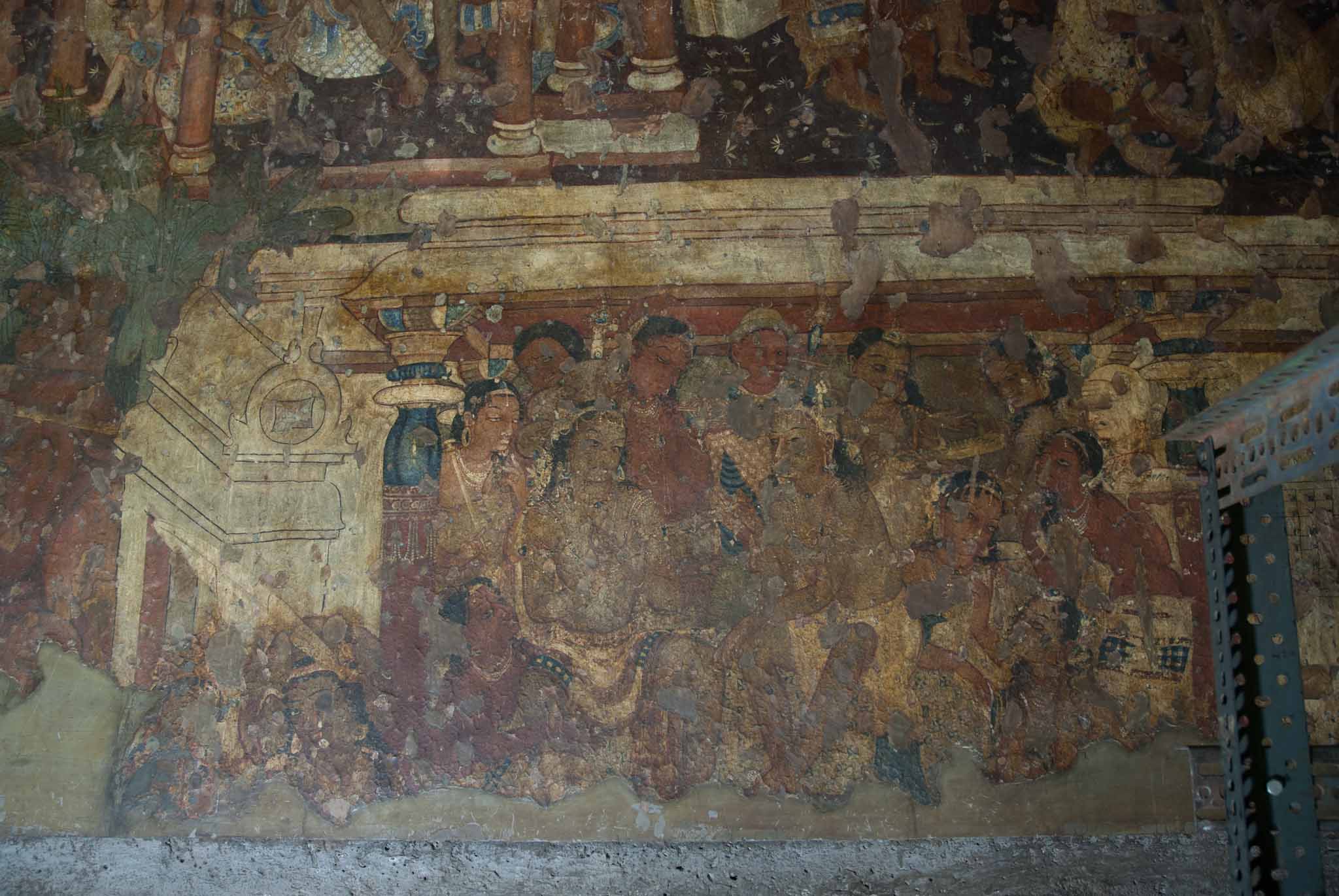
#60. Campaka
Cave No. 1 Identification: Foucher (1921, narrative no. 2).—The miffed wife of a nāga (serpent) king went to a royal court to complain that a hunter had caught her husband just so that he could put up his catch for display and earn some cheap brownie points. So far, the nāga king had been leading…
-
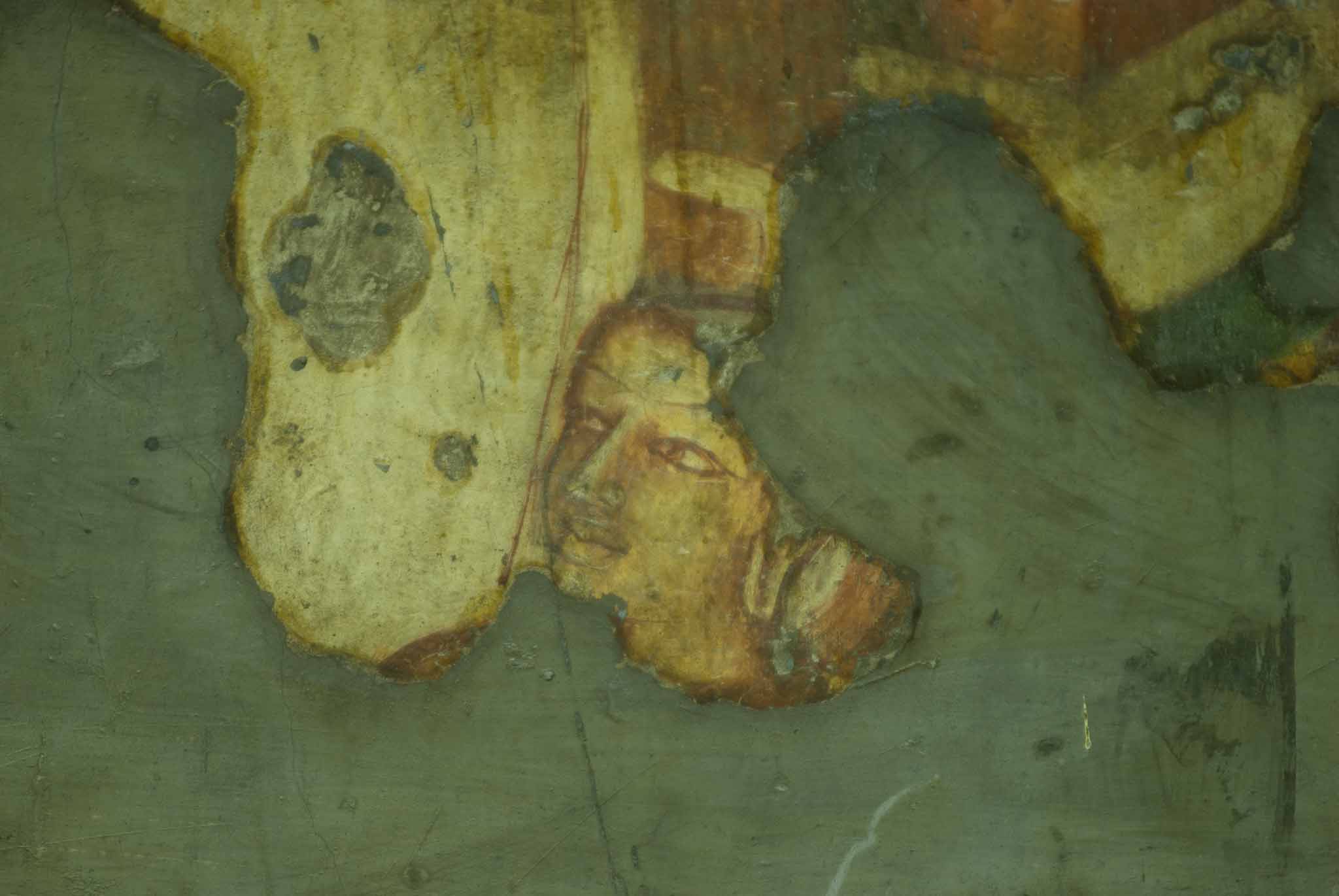
#76. Nāgakumāra
Cave No. 1 Identification: Schlingloff (1977b, p. 913–917)In a previous age when a Buddha named Kāśyapa was living, a nāga (serpent) prince died in the claws of a garuḍa (eagle). Before his death, he saw some monks meditating in the hills and wished to become a monk in his next life. He was reborn as…
-
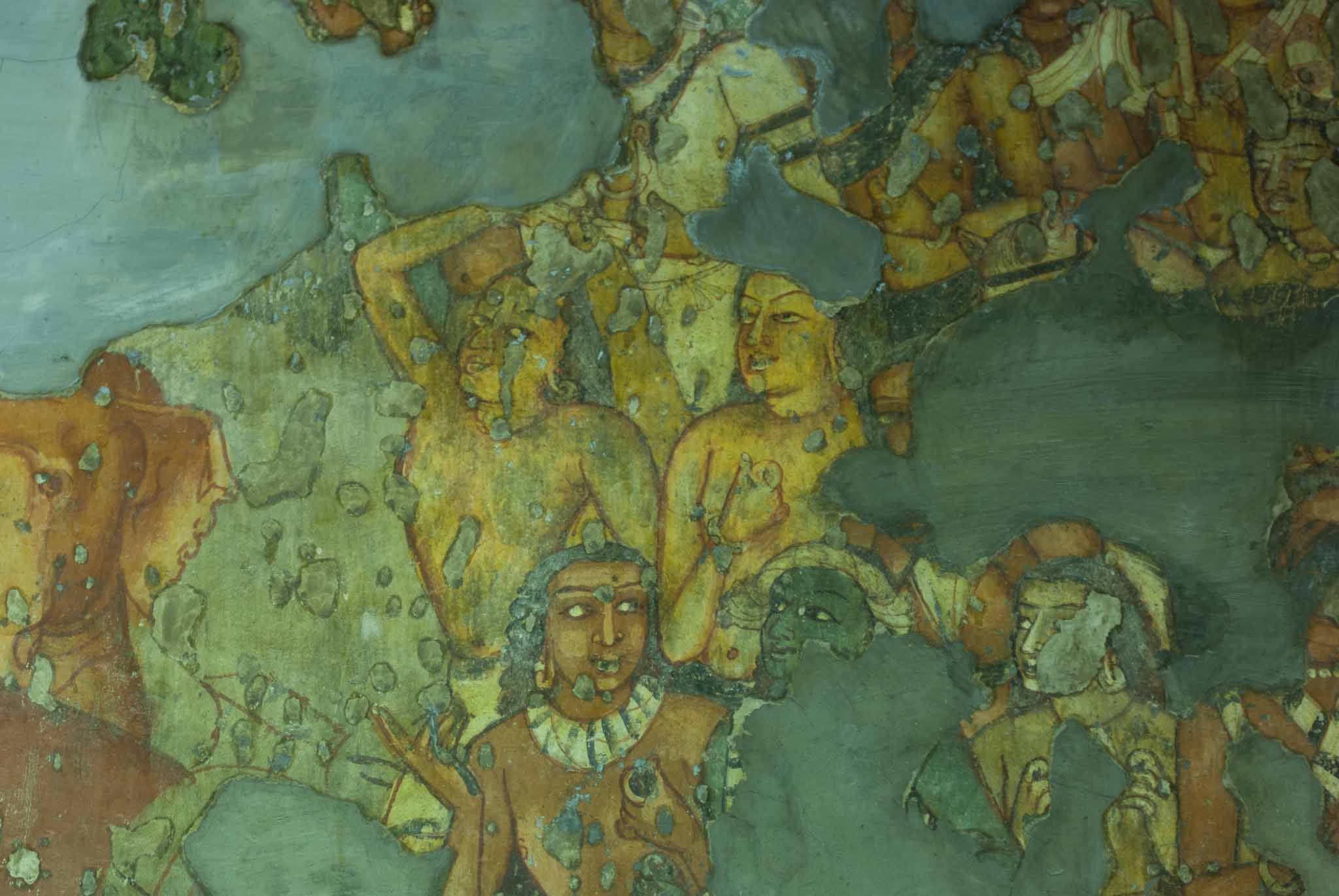
#53. Prabhāsa
Cave No. 1 Identification: Schlingloff (1977c, p. 152).— King Prabhāsa caught an elephant. He trained the animal and decided to take him out for a walk one fine day. The elephant sniffed out the odour of a female elephant, it being the mating season, and was immediately aroused. In the flurry of jumbo activity that…
-

#80. Māravijaya
Ajanta Cave 1. The narrative was identified by Griffiths (Burgess 1879, 14). The legend is from the life of the Buddha.—Indra, disguised as a grass-cutter, offered a bundle of straw to the Bodhisattva who had reached the stage just before the enlightenment. The Buddha first sat in the vajrāsana posture (vajrāsanam abhiruhya or Diamond Seat),…
-
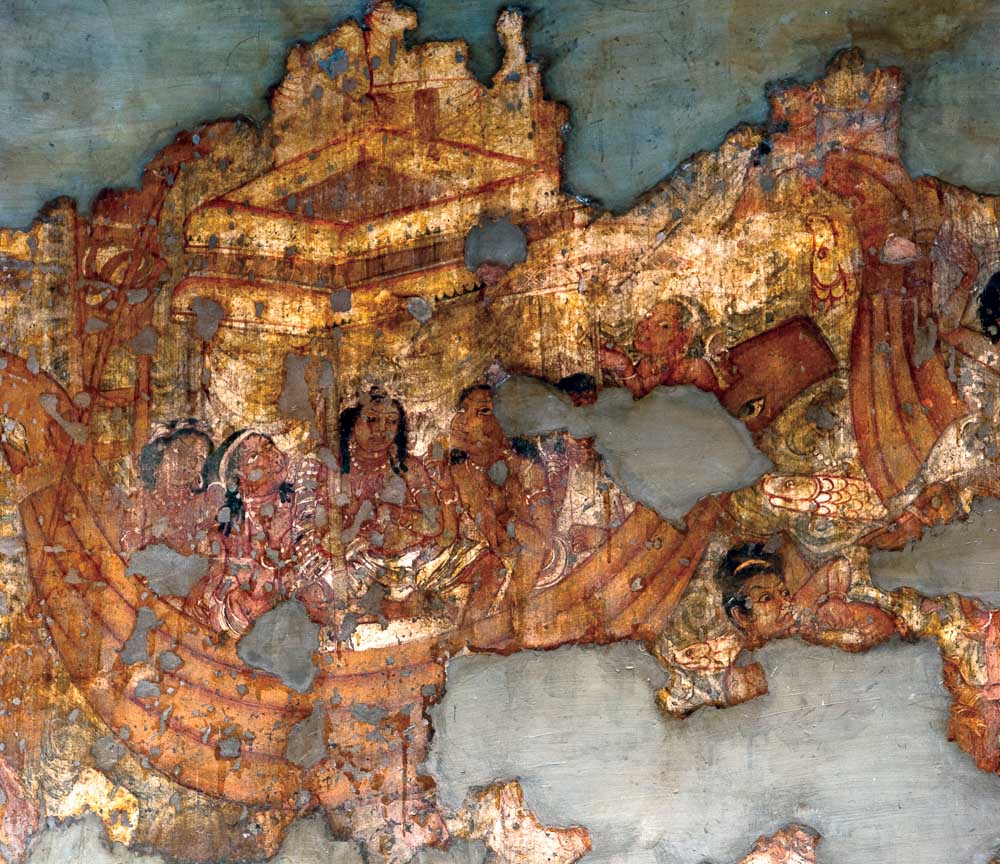
#41. Kalyāṇakārin
Ajanta Cave 1 The narrative was identified by Schlingloff (1976, 5–16). Two princes, Kalyāṇakārin (‘Doing Good’) and Pāpakārin (‘Doing Evil’), bore the characteristics of their names. Once, Kalyāṇakārin, accompanied by Pāpakārin, embarked on a sea voyage in search of wealth as endless charity had emptied out the royal coffers. During their voyage, Kalyāṇakārin found a…
-

#45. Janaka
The narrative was identifiied by Goloubew (1927, 16). King Janaka of Videha believed that a person’s willpower was responsible for his successes. Once he was rescued from a shipwreck by a deity after he managed to keep afloat for a while on the sheer strength of his will. His will power also helped him secure…
-

#59. Śaṅkhapāla
Ajanta Cave 1 The narrative was identified by Foucher (1921, narrative no. 13). A nāga (serpent) king named Śaṅkhapāla visited a hermit to find out the reason behind his rejection of the worldly life. The hermit instructs the nāga king that he must practice asceticism to be reborn as a human. Thereafter when Śaṅkhapāla was…
-

#40. Sudhana
The narrative was identified by Dieter Schlingloff (1973a, 155–167). Summary of the story There was a nāga (one of a race of semi-human serpents) prince who ruled over a kingdom abutting his father, the nāga king’s, kingdom. Once a snake charmer sent by a human king to capture the nāga prince was killed by a…
-

#75. Udrāyaṇa
Ajanta Cave 1 The narrative was identified by Dieter Schlingloff (1987, 60). The legend is from the life of the Buddha.—King Udrāyaṇa of Roruka received a painting, representing the Buddha, as a gift from his friend, Bimbisāra, the king of Rājagṛha. Udrāyaṇa was so impressed by this painting that he summoned a monk to preach…
